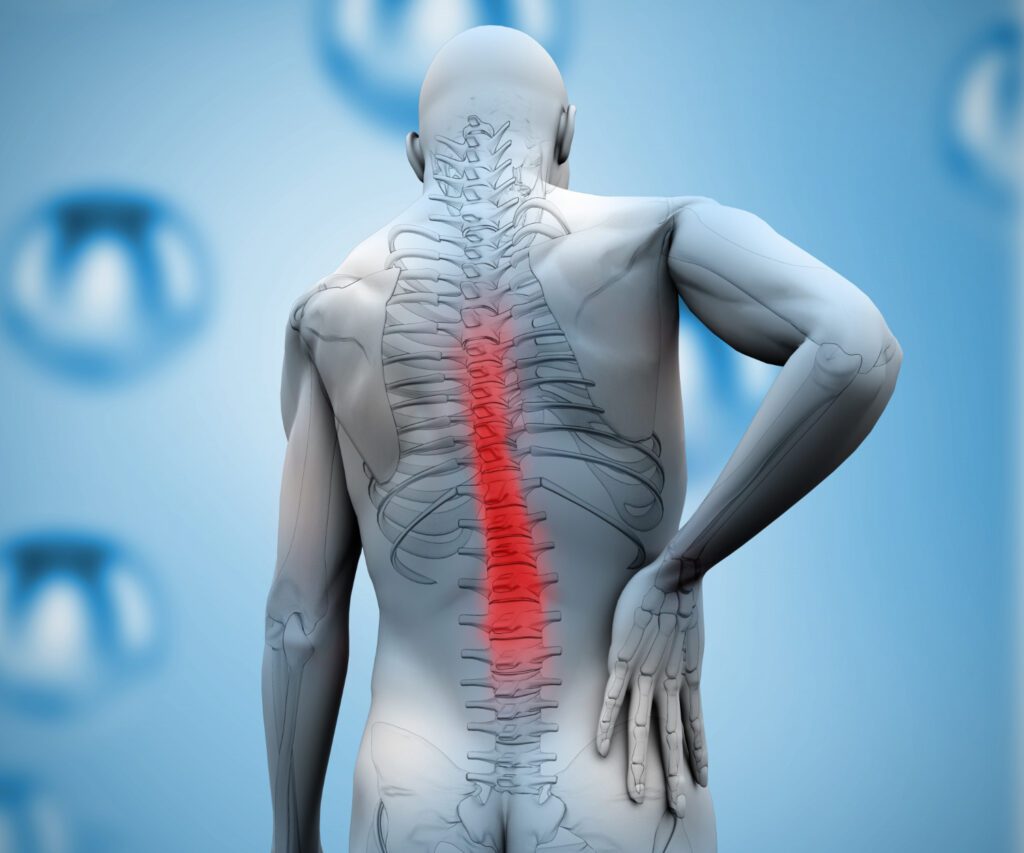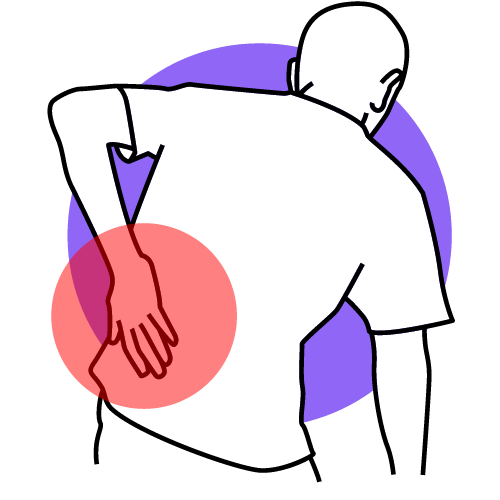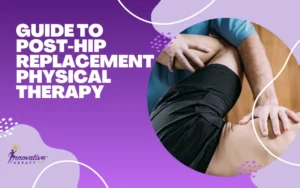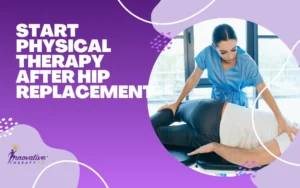Hyperactivity in physical activities can lead to overstrain and back pain, causing discomfort and limitations in daily routines.
Physical therapy offers practical strategies to alleviate the pain and restore functionality in individuals suffering from overactivity-related back pain.
By targeting specific muscle groups, improving flexibility, and providing educational guidance for proper body mechanics, physical therapists can facilitate the healing process and help patients regain their strength and mobility.
This informative blog post will delve into the various physical therapy techniques and exercises designed to address overactivity-induced back pain, providing valuable insights for individuals seeking relief from physical strain-related discomfort.
Key Takeaways:
- Understanding overactivity: Overactivity in the muscles of the back can lead to pain and discomfort. It’s essential to understand the cause of overactivity in order to treat back pain effectively.
- Therapeutic exercises: Physical therapy strategies for back pain from physical strain often involve therapeutic exercises to target and strengthen the affected muscles, helping to alleviate overactivity and reduce pain.
- Core stabilization: Focusing on core stabilization can help improve posture and reduce strain on the back, leading to long-term relief from overactivity-related back pain.
- Manual therapy techniques: In addition to exercises, manual therapy techniques such as massage and joint mobilization can be used to address overactivity and promote healing in the affected muscles.
- Patient education: Teaching patients about proper body mechanics and ergonomics can help prevent future overactivity and reduce the risk of recurrent back pain due to physical strain.
Assessing Back Pain

Some injuries and strains can lead to debilitating back pain, affecting everyday activities and reducing overall quality of life.
When it comes to healing overactivity in the back, it’s crucial to start with a comprehensive assessment of the pain and its sources to determine the most effective physical therapy strategies for recovery.
Identifying the Sources of Overactivity
On the road to healing back pain, it’s imperative to identify the sources of overactivity that may be contributing to the discomfort.
This can include an assessment of daily habits, work-related activities, exercise routines, and previous injuries that may have contributed to the current pain.
On a physical level, improper posture, muscle imbalances, or spinal misalignments could be causing overactivity in the back and leading to pain and discomfort.
Tools and Techniques for Proper Diagnosis
For a comprehensive assessment, physical therapists use a variety of tools and techniques for the proper diagnosis of overactivity in the back.
This may include a range of motion tests, functional movement assessments, and imaging such as X-rays or MRIs to identify any structural damages or abnormalities in the back.
Techniques such as manual palpation, muscle strength testing, and postural analysis are essential in pinpointing the exact areas of overactivity and determining the most suitable treatment plan for recovery.
Techniques like range of motion tests, functional movement assessments, and imaging such as X-rays or MRIs are crucial in identifying the sources of overactivity in the back and determining the appropriate physical therapy strategies for healing.
Physical Therapy Techniques for Healing Overactivity

Even with proper precautions, overactivity can lead to back pain and discomfort.
Utilizing physical therapy techniques can help alleviate the symptoms and promote healing.
Here are some effective strategies for addressing overactivity-related back pain:
Stretching and Flexibility Exercises
Techniques such as stretching and flexibility exercises can help alleviate tightness and stiffness in the muscles and improve the overall range of motion.
These exercises can target specific muscle groups in the back, hips, and legs, helping to alleviate tension and improve flexibility.
The use of dynamic stretching, static stretching, and yoga-based movements can all play a crucial role in enhancing flexibility and reducing pain.
Additionally, incorporating foam rolling and mobility exercises can further aid in loosening tight muscles and improving overall flexibility, ultimately contributing to reduced discomfort and improved movement.
Read more: Most Effective Sciatica & Lower Back Pain Exercises
Strengthening Core Muscles
Strengthening the core muscles is crucial in providing stability and support for the spine, ultimately reducing the likelihood of back pain.
By engaging in exercises that target the abdominal muscles, obliques, and lower back muscles, individuals can build a strong foundation that supports the spine and promotes proper alignment.
Plus, strengthening the core muscles can also contribute to better posture, improved balance, and enhanced overall physical performance, further reducing the risk of overactivity-related back pain.
Proper Posture and Ergonomics Training
Healing overactivity-related back pain also involves addressing posture and ergonomics.
Implementing proper posture and ergonomics training can help individuals maintain a neutral spine position and reduce the strain on the back during daily activities.
This can involve adjustments to workspace ergonomics, as well as guidance on maintaining proper posture while sitting, standing, and performing various physical tasks.
Overactivity-related back pain can often result from poor posture and repetitive movements, making it crucial to address these factors through proper training and awareness.
Manual Therapy and Massage
With professional manual therapy and massage, individuals can receive targeted treatment to alleviate muscle tension, promote relaxation, and improve circulation in the affected areas.
Manual therapy techniques such as joint mobilization and soft tissue manipulation can help restore mobility and reduce pain. At the same time, massage can provide relief from muscle tightness and discomfort.
Ergonomics and posture training can be complemented with regular manual therapy and massage sessions to enhance the overall effectiveness of the treatment approach, providing individuals with more significant relief from overactivity-related back pain.
Creating a Personalized Back Pain Treatment Plan

For individuals suffering from back pain caused by physical strain, it is crucial to develop a personalized treatment plan to address their specific needs and challenges. This plan should encompass a range of physical therapy strategies aimed at reducing pain, promoting healing, and restoring function.
Setting Realistic Goals and Expectations
Pain management and rehabilitation for back pain require setting realistic goals and expectations.
Individuals need to understand that complete relief may not be achievable and that the focus should be on improving functionality, reducing pain, and enhancing quality of life.
Setting manageable goals and maintaining realistic expectations will provide a foundation for a successful treatment plan.
Integrating Physical Therapy into Daily Life
Pain management and rehabilitation should not be limited to therapy sessions but rather integrated into daily life.
Individuals need to incorporate prescribed exercises, movements, and ergonomic practices into their everyday routine to promote healing, reduce pain, and prevent future injury.
Consistency and commitment to integrating physical therapy strategies into daily life will yield the most effective results.
With dedication and perseverance, integrating physical therapy strategies into daily life can significantly improve back pain and overall physical well-being.
By incorporating recommended exercises, movements, and ergonomic practices into daily routines, individuals can experience reduced pain, increased functionality, and an enhanced quality of life.
Monitoring Progress and Preventing Future Injury
Despite the progress made in physical therapy sessions, it is crucial to monitor your healing and prevent future injury.
This can be achieved through tracking healing and adjustments to therapy, as well as educating yourself on long-term back care strategies.

Tracking Healing and Adjustments to Therapy
Adjustments to your therapy plan may be necessary as you progress through your healing journey.
Making regular appointments with your physical therapist will allow them to track your progress and make any necessary adjustments to your treatment plan.
This may include modifying exercises, introducing new techniques, or altering the frequency of your sessions.
Education on Long-term Back Care Strategies
Future injury prevention starts with a comprehensive understanding of long-term back care strategies.
Your physical therapist can educate you on proper body mechanics, posture, and specific exercises to strengthen and support your back.
This knowledge will empower you to take control of your back health and reduce the risk of re-injury in the future.
Back care education is essential for maintaining a healthy, pain-free about for years to come.
By implementing the strategies learned during physical therapy, you can improve your overall wellness and prevent future pain and discomfort.
It is essential to stay mindful of your movements and posture and to incorporate regular exercise and stretching into your daily routine.
With the proper knowledge and habits in place, you can significantly reduce the risk of future back injuries and enjoy a more active and pain-free lifestyle.
Healing Overactivity – Physical Therapy Strategies for Back Pain from Physical Strain
Summing up, physical therapy plays a crucial role in addressing back pain caused by physical strain.
By focusing on strategies such as stretching, strengthening exercises, and postural training, therapists can help individuals suffering from overactivity-related back pain regain strength, flexibility, and function.
Individuals need to work closely with their physical therapist to develop a personalized treatment plan that meets their specific needs and aids in their overall recovery.
With a proactive and comprehensive approach, physical therapy can effectively alleviate back pain and prevent future injuries related to overactivity.

FAQ About Physical Therapy Strategies for Back Pain from Physical Strain
What is overactivity-related back pain?
Overactivity-related back pain is discomfort or pain in the back caused by excessive physical strain or overuse of the back muscles and structures.
What are the common causes of overactivity-related back pain?
Common causes of overactivity-related back pain include poor posture, repetitive bending and lifting, and sudden strenuous activities.
How can physical therapy help in healing overactivity-related back pain?
Physical therapy can help by providing targeted exercises and stretches to improve back strength and flexibility, as well as by promoting better body mechanics and posture.
What are some physical therapy strategies for managing overactivity-related back pain?
Physical therapy strategies may include core-strengthening exercises, manual therapy, postural education, and ergonomic recommendations to prevent future injury.
Is it safe to perform physical therapy for back pain at home?
While some exercises and stretches can be done at home, it is essential to seek guidance from a licensed physical therapist to ensure proper technique and prevent further injury.
How long does it take to see improvement with physical therapy for overactivity-related back pain?
The timeline for improvement varies for each individual, but with consistent adherence to a physical therapy program, many patients report reduced pain and improved function within a few weeks to a few months.
Can overactivity-related back pain be prevented through physical therapy?
Yes, physical therapy can help prevent overactivity-related back pain by teaching proper body mechanics, strengthening muscles, and addressing any underlying issues that may contribute to the pain.






